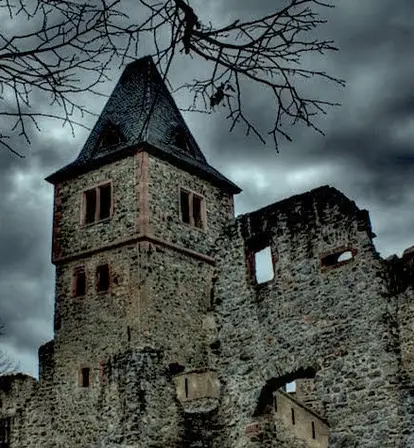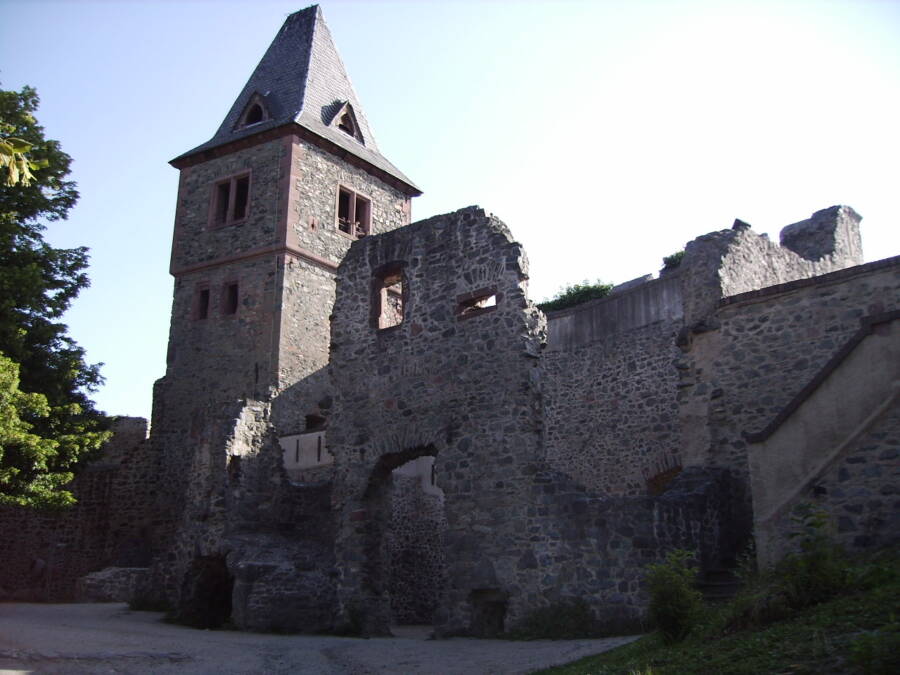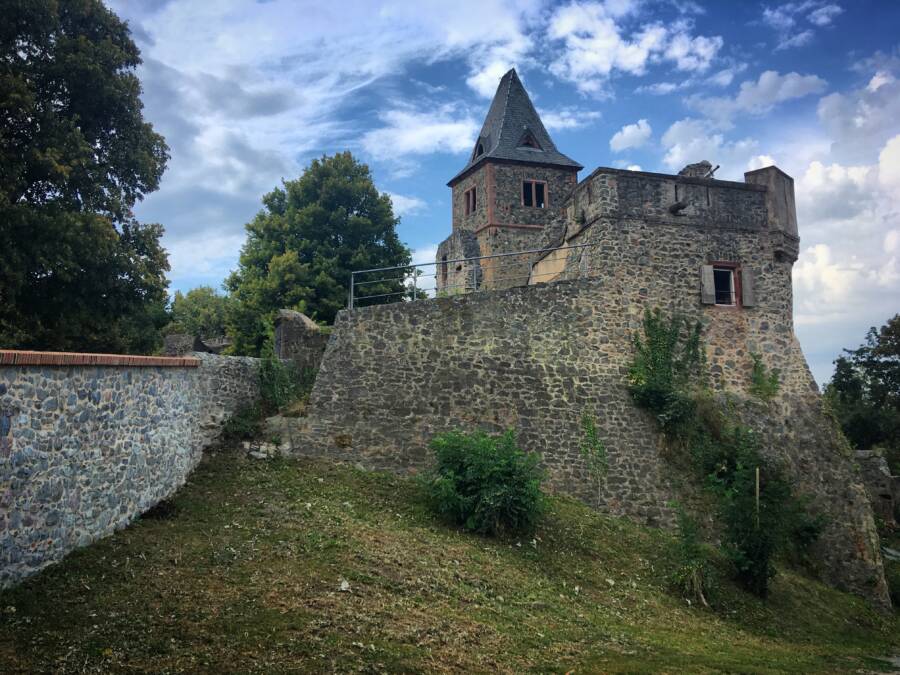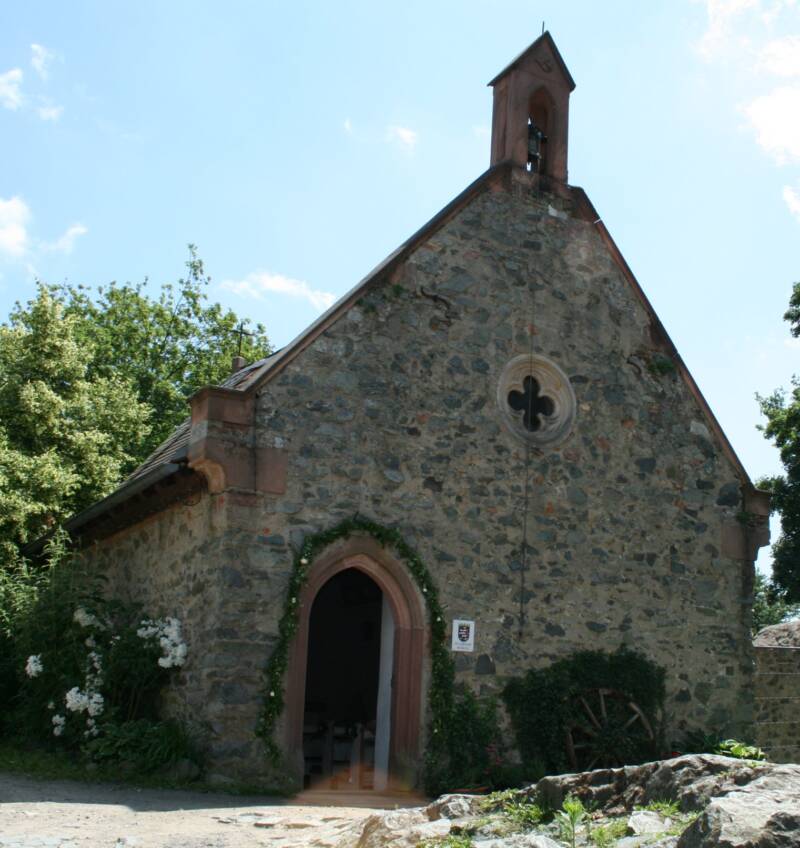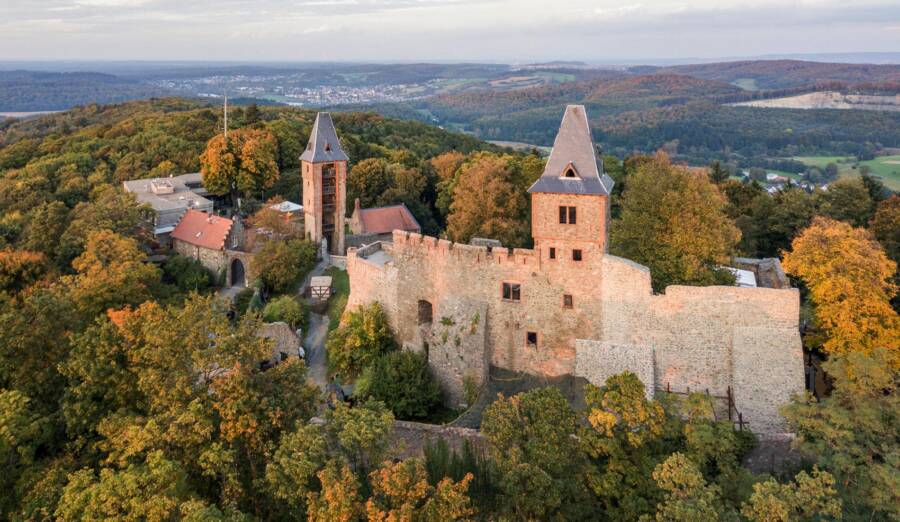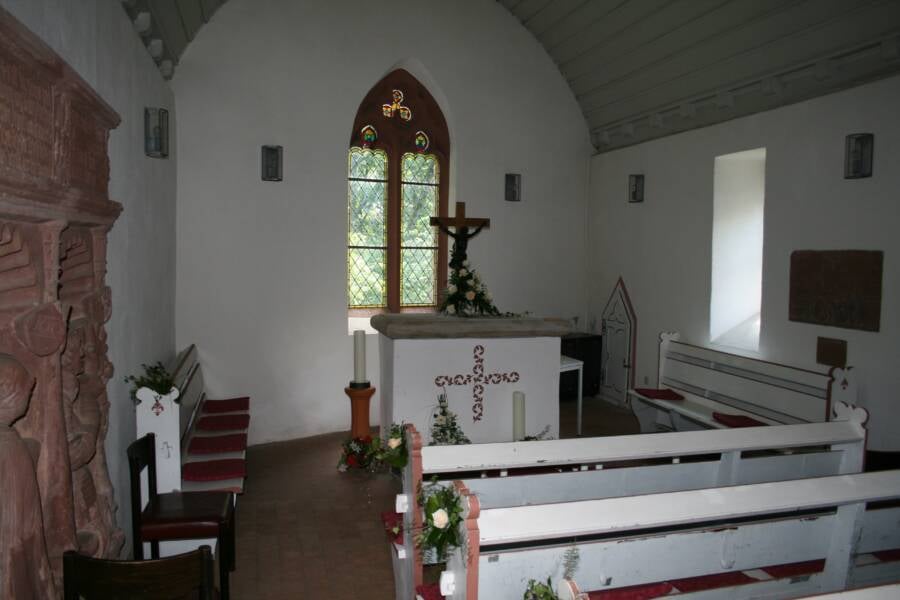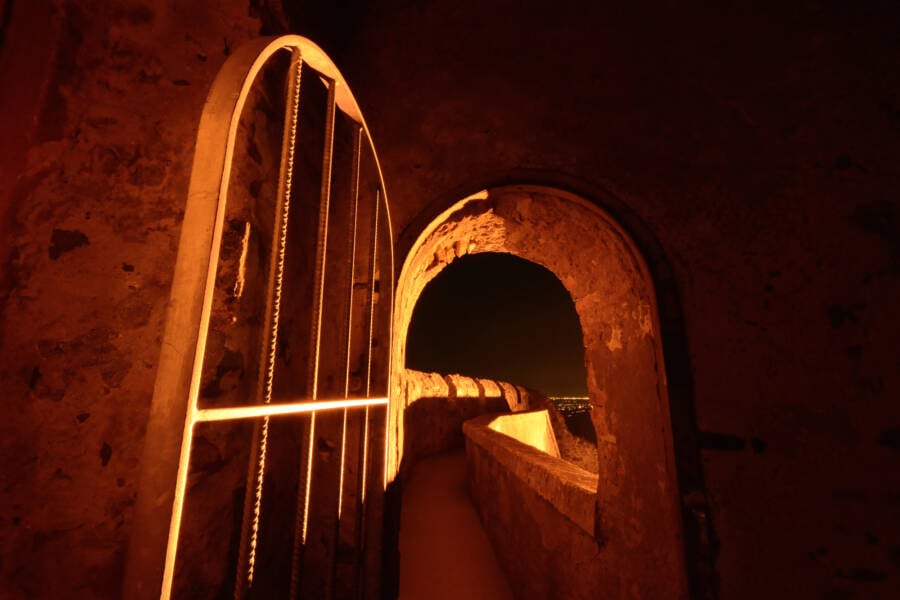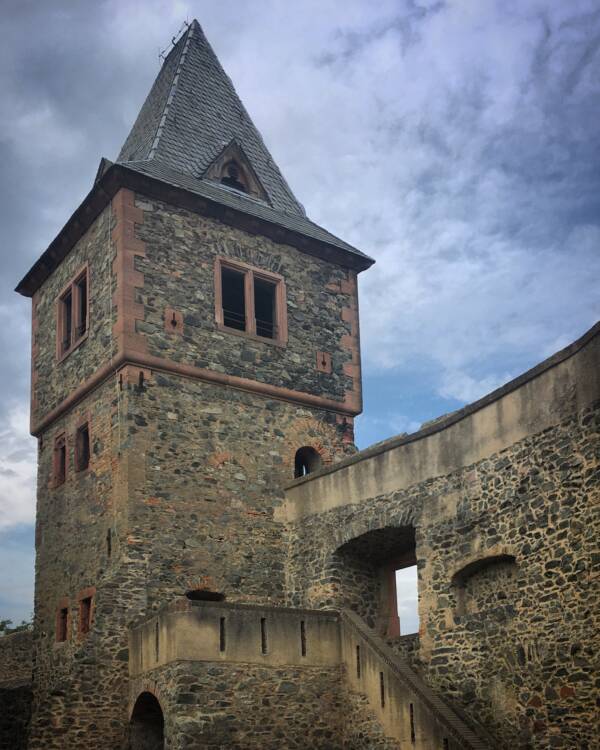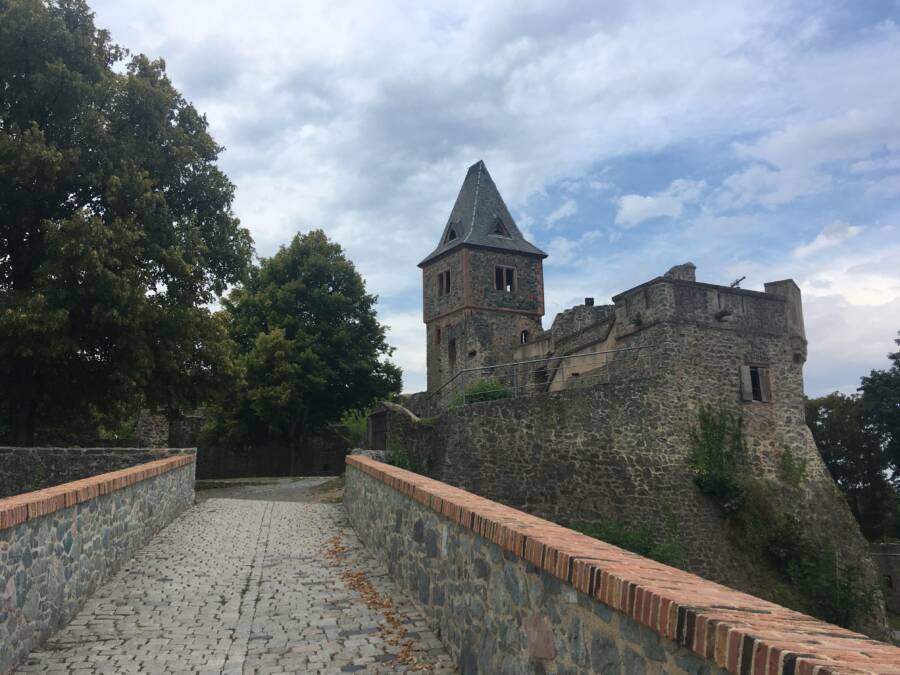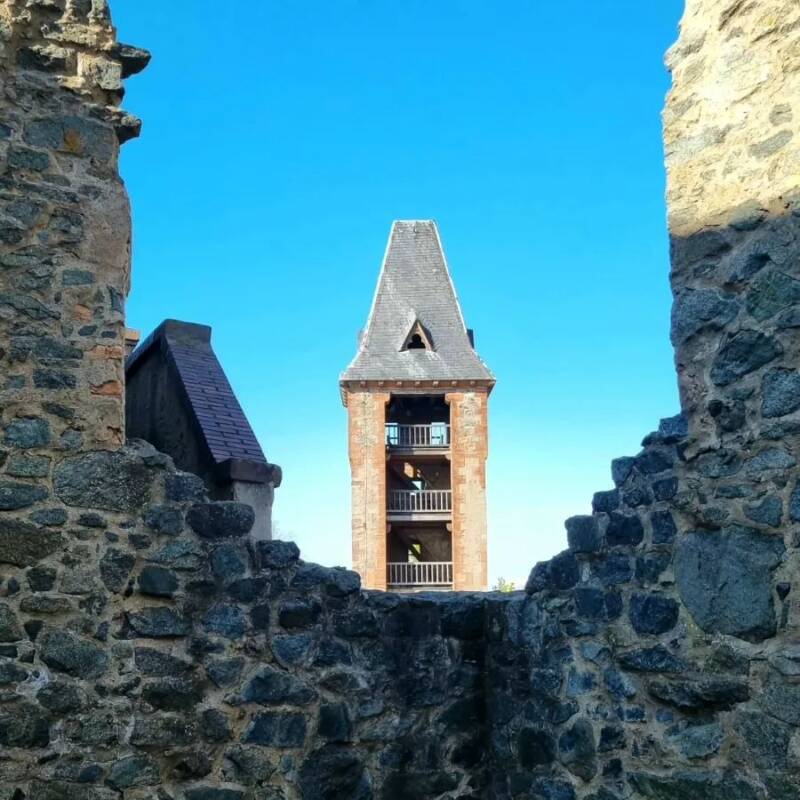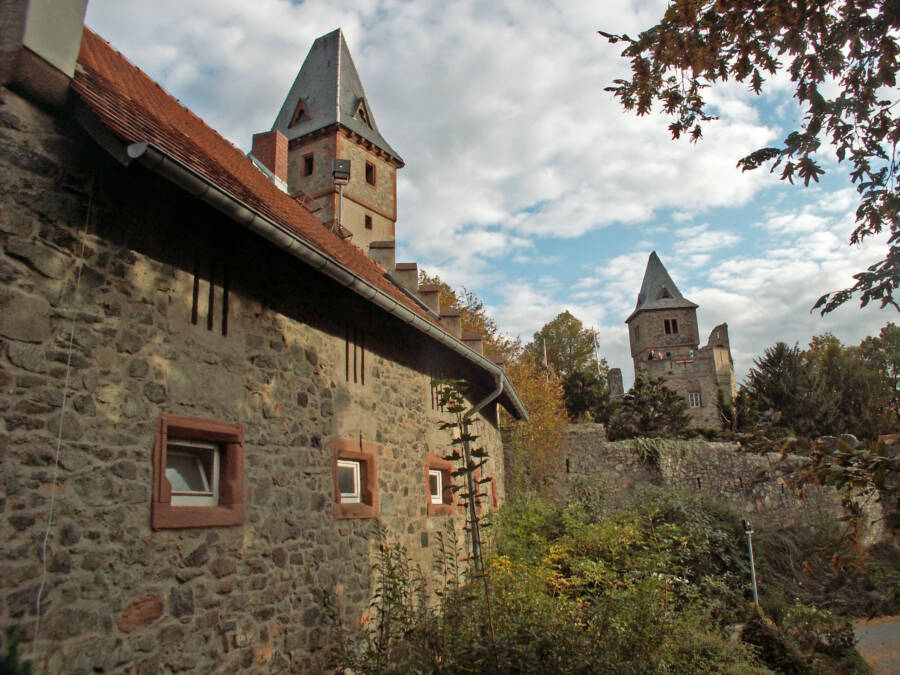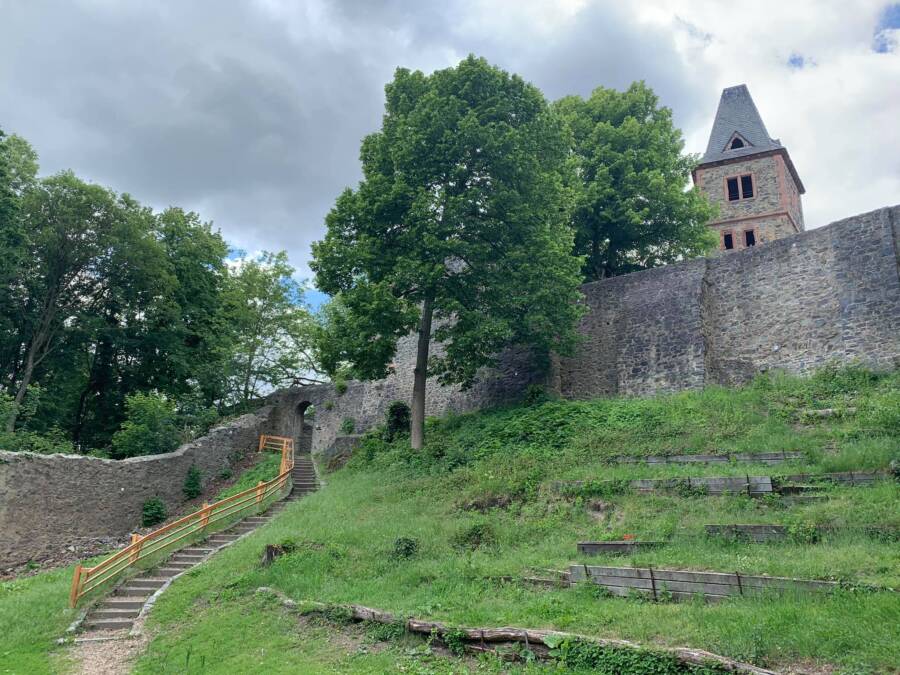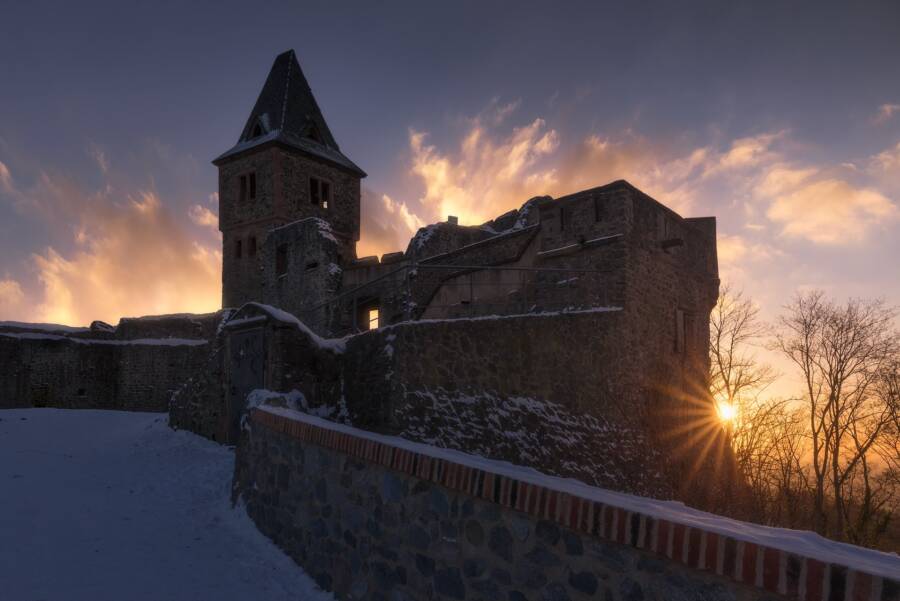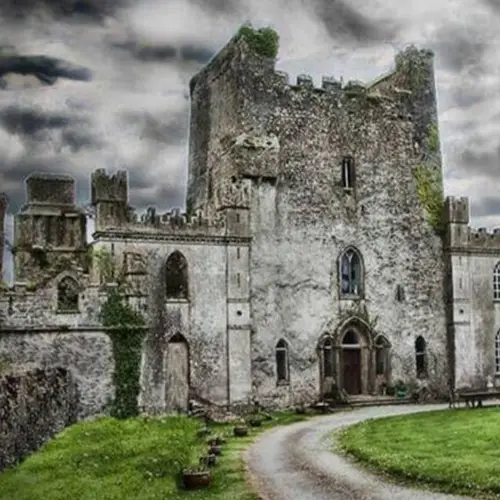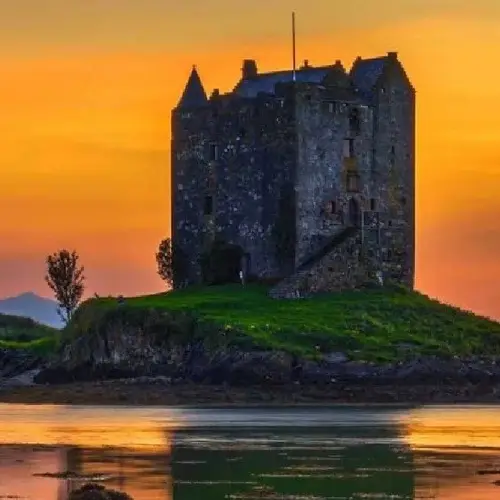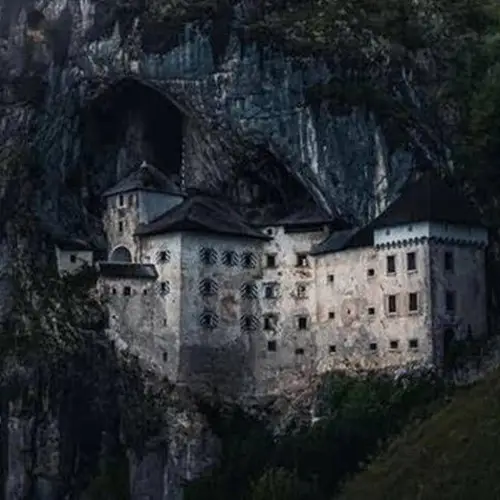Originally built in the 13th century, Frankenstein Castle is largely in ruins today — but its potential ties to Mary Shelley's iconic horror novel have made it one of the most popular burgs to visit in all of Germany.
Only a few days after her 17th birthday in 1814, English writer Mary Shelley and her husband, the radical poet Percy Bysshe Shelley, found themselves in the town of Gernsheim, Germany. From there, they could likely see the towers of a large castle looming in the distance. The burg, which would go on to share much in common with the fortress in Mary Shelley’s iconic horror novel, is known as Frankenstein Castle.
Located in the town of Mühltal, the 13th-century castle stands high above the Rhine Valley in the Odenwald, a mountain range in southern Germany. Although all that remains of Frankenstein Castle today are a few ruined buildings and walls, the fortress was once a domineering presence.
And like the castle in Mary Shelley’s Frankenstein, the real-life Frankenstein Castle (also sometimes called Castle Frankenstein or Burg Frankenstein) has long been shrouded in mystery and disturbing rumors, especially surrounding its most infamous resident, Johann Konrad Dippel.
See some of the most eerie photos of the medieval burg in the gallery below, then learn the chilling true history behind the fortress.
Johann Konrad Dippel And The Spooky History Of Frankenstein Castle
Born in Frankenstein Castle in 1673, physician Johann Konrad Dippel was the subject of plentiful rumors, legends, and controversies during his life.
Per a report from the Royal College of Surgeons of England, entitled "Saints and Sinners," Dippel studied theology, alchemy, and philosophy at Giessen University, and quickly established a reputation as a gifted student.
However, as a result, Dippel's ego often went unchecked, and his combative personality led to numerous public disputes, particularly with the dissident Pietists, as Dippel was a staunch defender of traditional Lutheranism.
Then, as a philosophy lecturer at Wittenberg and Strasbourg, Dippel's interest in alchemy expanded. But his religious disputes continued, and he was accused of killing a man in a duel, so he fled and returned to Giessen.
There, he continued to delve into alchemical practices, firmly believing that he could turn lead into gold. He also began using animal parts in his experiments, combining leather, blood, and horns into a black concoction called "Dippel's Oil." Dippel claimed that this oil was an "elixir of life" that could be used to treat any number of medical conditions.

Public DomainJohann Konrad Dippel, the infamous alchemist of Burg Frankenstein.
Of course, Dippel's Oil was not a miracle cure. However, it was later used during World War II to coat the insides of wells, thus making the water undrinkable for any opposing armies who tried to use them.
Dippel was also rumored to have performed therapies using electricity, created potions, and even experimented on stolen body parts that he had taken from graves. Perhaps most chilling, he reportedly theorized about transferring souls between dead bodies.
It's little wonder why Dippel's alleged experiments have led many to speculate that he may have been the real-life mad scientist who inspired Mary Shelley's Frankenstein. It is possible, scholars have noted, that Shelley heard tales about Dippel during her brief visit to Gernsheim in 1814 and used these chilling stories as inspiration for her iconic horror novel.
In any case, Dippel's story came to an end in 1734, just one year after he published a pamphlet claiming that he had finally perfected his elixir of life and would live to be 135 years old. (He was 61 when he died.) While it's believed he died of a stroke, some have speculated that he was poisoned.
Did Mary Shelley Base Frankenstein Off Of Frankenstein Castle?
It's not possible to say for certain whether Mary Shelley based her book off of the German castle or the mad scientist who once lived there.
We know Mary and her husband Percy Bysshe Shelley traveled along the Rhine following an elopement in France and a trip to Switzerland, according to National Geographic. Having improperly managed their money, the couple returned to England via boat, passing through Germany along the way.
During their journey back home, the Shelleys spent around three hours in the town of Gernsheim, where they likely saw Castle Frankenstein in the distance. And it's believed that Mary Shelley may have heard stories about Dippel and his alleged experiments during or after this trip.

FacebookFrankenstein Castle, or Burg Frankenstein, on a foggy day.
By that point in time, both Mary and Percy Bysshe Shelley were fascinated by the idea of reanimating limbs with electricity. And since Dippel used electricity in his experiments and allegedly attempted to bring the dead back to life, it's not hard to see why he might've influenced Mary Shelley's writing.
That said, Mary Shelley never specifically cited Dippel or Frankenstein Castle as direct inspirations for her novel. In fact, by her own account, the main inspiration for the novel came from a nightmare that she had.
In an 1831 preface to Frankenstein, she wrote:
"I saw — with shut eyes, but acute mental vision — I saw the pale student of the unhallowed arts kneeling beside the thing he had put together. I saw the hideous phantasm of a man stretched out, and then, on the working of some powerful engine show signs of life and stir with an uneasy, half-vital motion..."
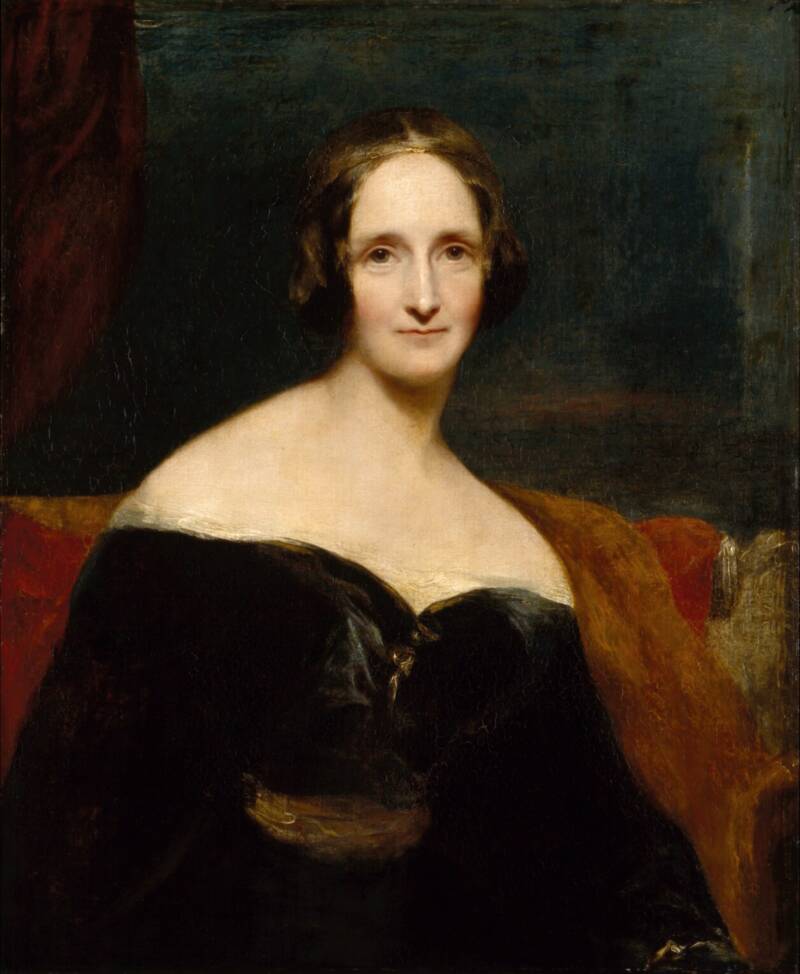
Public DomainMary Shelley was just 21 years old when she published her novel Frankenstein; or, the Modern Prometheus.
She also was said to have come up with the idea for Frankenstein while staying in Geneva, Switzerland with the poet Lord Byron and participating in a ghost story competition with a group of fellow writers.
Of course, it's possible that Dippel's life or other stories about Burg Frankenstein — like the magnetic stones in the nearby forest that were allegedly used by witches in their rituals or the fabled fountain of youth located just behind the fortress — also inspired Shelley and that she subconsciously incorporated those elements into her novel.
But in the end, we'll never know for sure.
What Is The Famous Fortress Like Today?
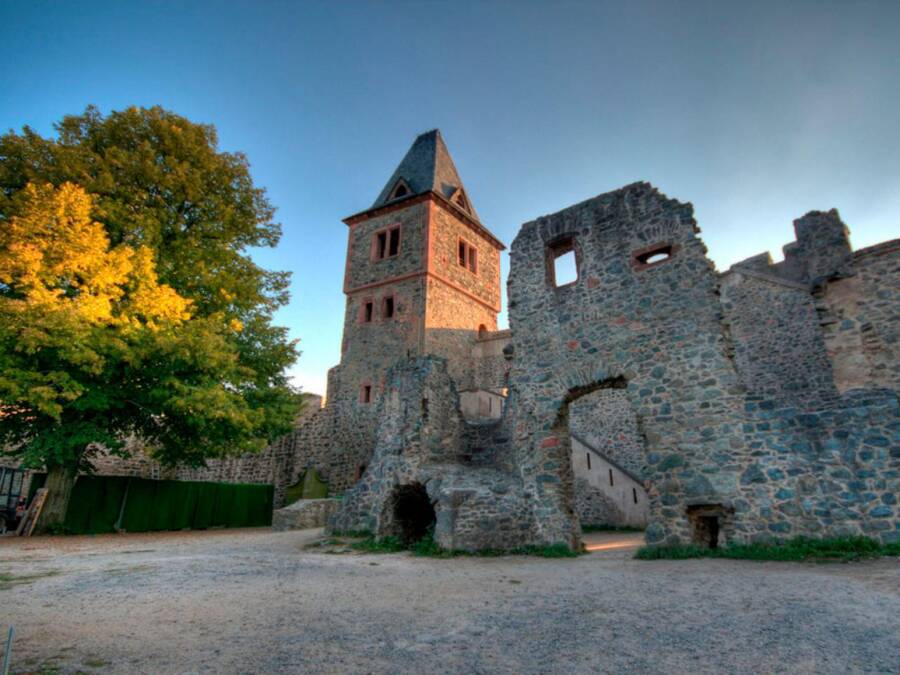
FacebookToday, Castle Frankenstein is open to the public, and each year, the castle is used for Halloween activities.
Those curious to see Frankenstein Castle are thankfully welcome to do so year round. The fortress is just a short drive south of Frankfurt, Germany, and though the castle itself is mostly in ruins today, save for two towers, a chapel, and a modern restaurant, it is still architecturally stunning.
Those who wish to dine at the castle can enjoy Frankensteiner cocktails (both alcoholic and non-alcoholic versions are available), and a variety of different meals, including vegan and child-friendly options.
Unsurprisingly, the most popular time to visit the fortress is Halloween. In late October and early November, guests can enjoy the annual Burg Frankenstein Halloween parties, featuring creepy dinner theater shows, spooky decorations, and, of course, plenty of people in costumes.
But while most of the festivities are on the lighthearted side, some modern ghost hunters have said that there is "significant paranormal activity" on the grounds. And some guests have also reported eerie experiences near the castle: "One can imagine Frankenstein haunting the ruins."
After this look into Germany's Frankenstein Castle, explore Bran Castle, the Transylvanian fortress said to be Dracula's home. Then, take a look inside McDermott's Castle, the Irish palace with a haunting secret.
